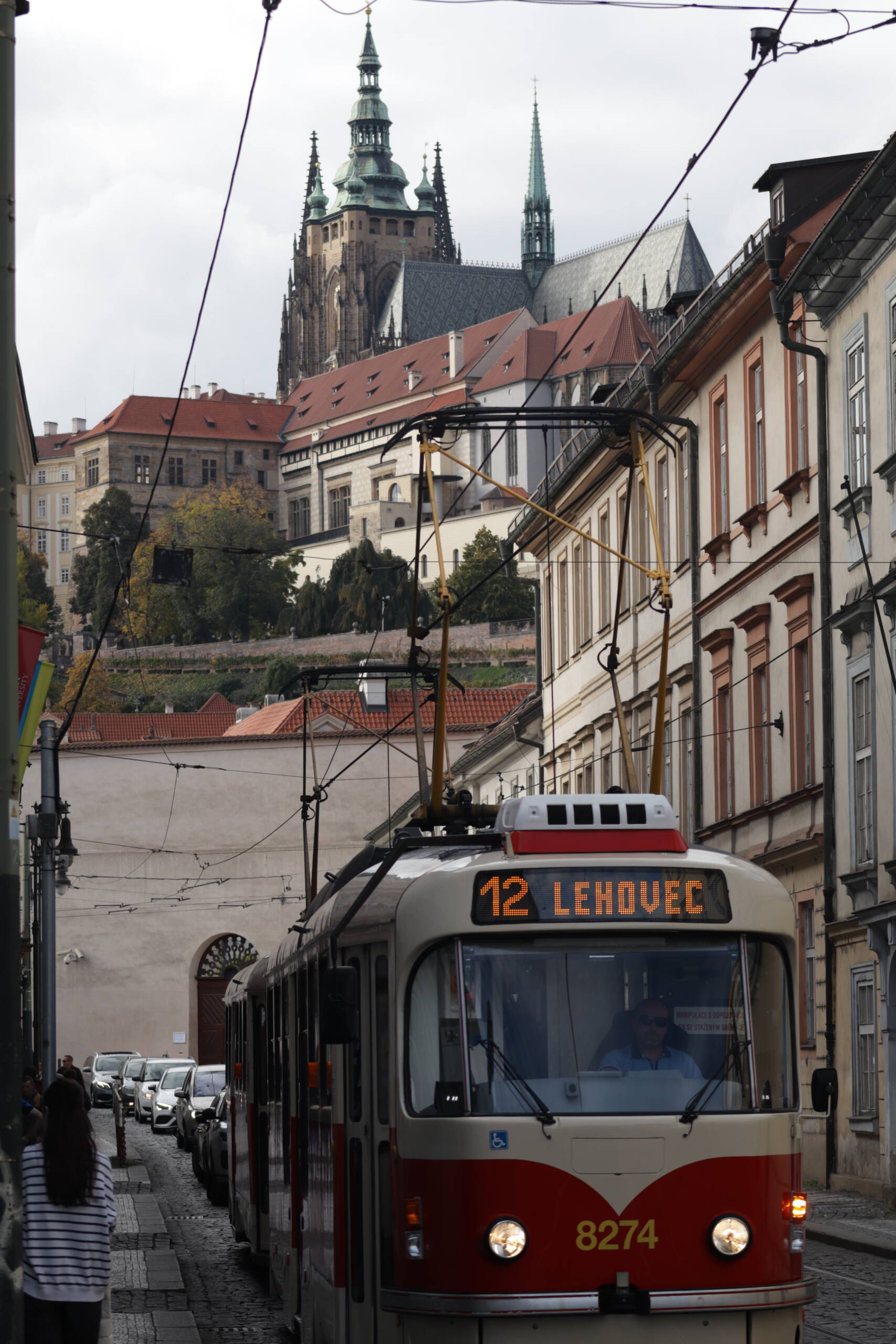There’s a peculiar sense of timelessness that washes over you when you step onto a tram in Prague. It isn’t just about getting from point A to point B, though of course that’s what most people are doing—commuting to work, heading home with groceries, finding their way across the bridges that stitch the city together. But for the traveler, for someone with eyes tuned toward the city’s moods, the tram becomes more than public transport. It’s a moving stage, where the drama of Prague unfolds one stop, one corner, one unexpected glance at a spire at a time.

Line 12, the one I caught, still clatters along like an old heartbeat, the kind of sound that belongs to Prague as much as the chiming of the Astronomical Clock or the hushed footsteps inside St. Vitus Cathedral. The tram itself feels solid, slightly worn, red and cream paint familiar like an old friend. I found myself smiling at the conductor, sunglasses on, hands confident on the controls—his expression calm, almost aloof, like he had long grown immune to the beauty flashing past his windows. For him, the city is a route, a schedule, wires overhead. For me, it was a story I was just beginning to write.
There’s something cinematic about sitting inside, the world slipping past the window: narrow cobblestone streets that could almost belong to a different century, archways that hint at hidden courtyards, locals who slip on and off without a glance. Every so often the tram jolts and groans, the wires overhead sparking faintly, and you remember how physical this experience is—none of the smooth sterility of modern metros. It’s clunky, it’s noisy, it demands you pay attention. And then, through the window, you see it: the cathedral spires rising high above the rooftops, always watching, always reminding you that Prague is more than the sum of its trams and cafés and hurried pedestrians.
I loved the way the tram pulled me through different layers of the city. One stop, and you’re in a quiet neighborhood with laundry hanging from windows. Another stop, and you’re suddenly facing the wide curve of the Vltava, bridges arcing elegantly over it like calligraphy. At times, it felt like the tram was telling me the story of Prague without words: the old woman clutching a shopping bag, the young couple whispering in Czech, the tourist who fumbles with coins at the ticket machine, the student with headphones staring at nothing. All of them folded into the same rhythm, as though the tram stitched their lives together in a single shared route.
What stays with me most isn’t a particular sight but the sensation of movement—the way the tram forces you to slow down, to notice, to let the city reveal itself frame by frame. Walking can be too deliberate; the metro too hidden underground. But the tram? It’s exactly in-between, gliding just fast enough to remind you of progress, just slow enough that the city can still whisper its details if you care to listen. The red roofs, the lines of washing, the faint smell of roasted chestnuts drifting in through the open window in autumn—they all come to you like gifts when you’re seated on one of those wooden benches, rocking gently toward wherever the tram decides to take you.
Taking a tram in Prague isn’t just transport—it’s an initiation into the city’s soul. You might get off at your intended stop, or you might not. Sometimes the better thing to do is simply to stay seated, let the number 12 carry you further than you planned, and watch as Prague spins its quiet, unhurried magic around you. You realize that you don’t need to rush toward the castle or the bridge or the next landmark. The city is already here, waiting in the click of the rails and the sway of the tram.
Leave a Reply